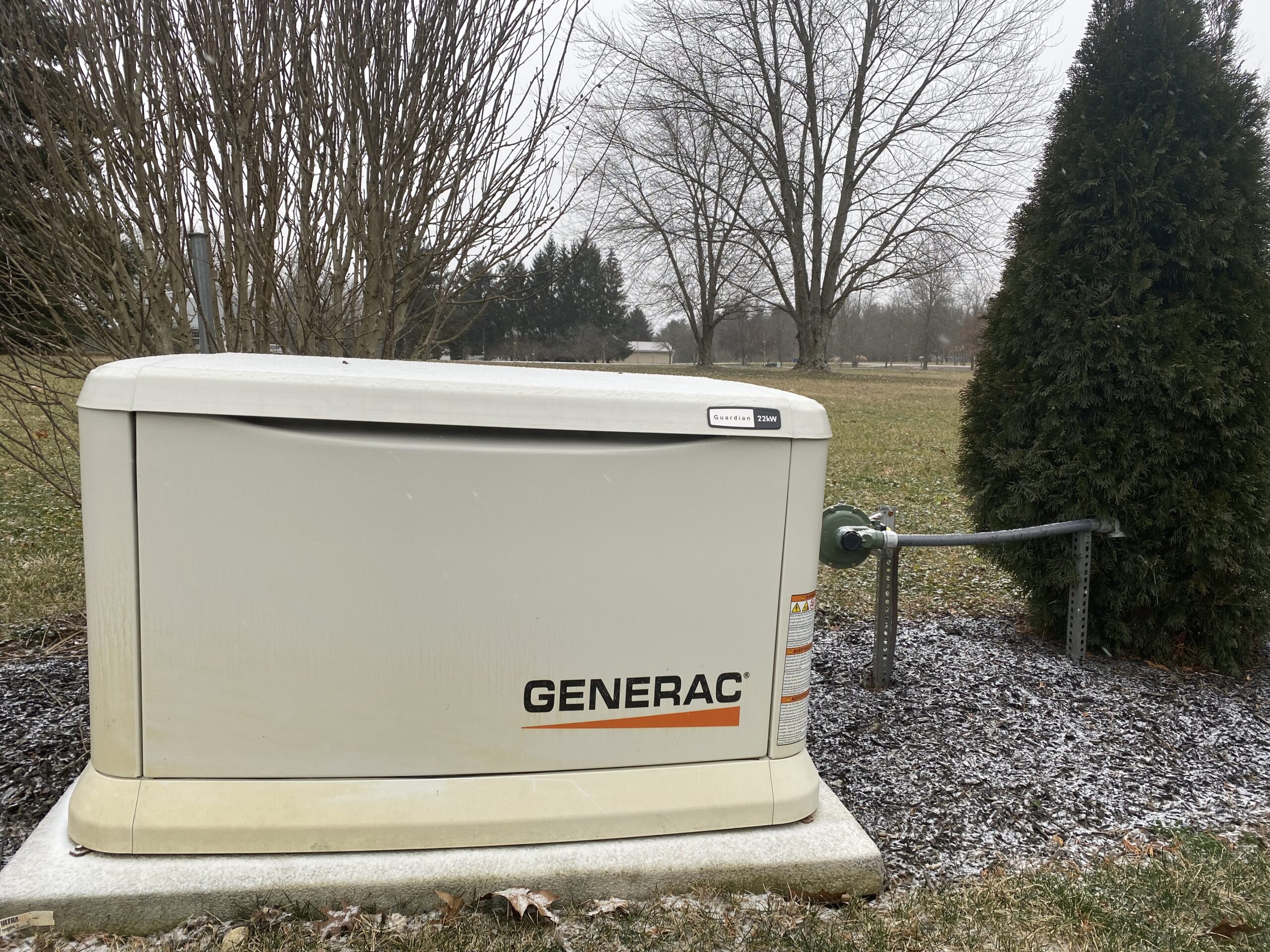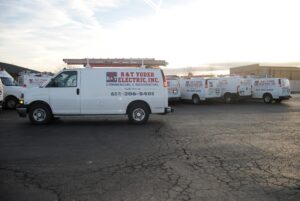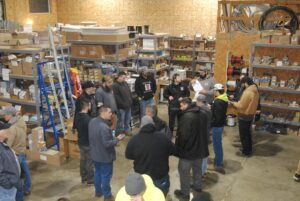
The world runs on electricity. From the refrigerator preserving your groceries to the Wi-Fi router connecting your smart devices, uninterrupted power is essential for daily life. Yet, despite modern infrastructure, power outages remain surprisingly common. Weather events, grid failures, and unforeseen accidents can plunge homes and businesses into darkness without warning.
This is where backup generator installation comes in. A well-installed generator ensures that when the grid goes down, your lights stay on, your HVAC system keeps running, and your essential appliances remain operational. It’s not just about convenience; it’s about protecting your home, livelihood, and peace of mind. In this article, we’ll explore the many reasons why installing a backup generator is a smart, future-proof investment.
The Growing Need for Backup Generators
Power outages have become more frequent due to extreme weather events, aging infrastructure, and increased electrical demand.
The Numbers Speak:
- In 2021 alone, the U.S. experienced over 1,500 significant power outages.
- Weather-related outages increased by 67% in the last two decades.
- The average American household experiences over eight hours of power disruption annually.
What Does This Mean for You?
Without a backup generator, every outage disrupts your routine, compromises safety, and can lead to financial losses. A reliable generator installation mitigates these risks by seamlessly providing power when you need it most.
Key Benefits of Backup Generator Installation
Investing in a backup generator isn’t an expense—it’s a strategic decision that yields long-term benefits. Here’s why:
1. Uninterrupted Power Supply (UPS)
Power outages disrupt work, leisure, and essential household functions. Backup generators bridge the gap, ensuring:
- Continuous operation of refrigerators, freezers, and sump pumps.
- Uninterrupted internet connectivity for remote work and communication.
- Consistent lighting, heating, and air conditioning during storms or blackouts.
Example:
Imagine hosting a family gathering when a thunderstorm strikes. Without a generator, you’re left with melting desserts and stifling indoor temperatures. With a backup system, the lights barely flicker before power is restored.
2. Enhanced Safety and Security
Electricity powers crucial safety devices like alarms, security cameras, and fire detection systems. When the grid fails, a backup generator keeps these systems running, protecting your property and loved ones.
Key Safety Benefits:
- Maintains visibility through outdoor lighting.
- Prevents security breaches during outages.
- Ensures proper ventilation for sump pumps, reducing carbon monoxide risks.
3. Protection Against Financial Loss
Extended outages lead to financial setbacks, particularly for businesses. Spoiled perishables, halted production, and lost transactions add up quickly.
For Homeowners:
- Prevents food spoilage in refrigerators.
- Avoids burst pipes during winter blackouts.
For Businesses:
- Maintains operational continuity.
- Prevents data loss in server rooms.
Fact:
The Department of Energy estimates that power outages cost the U.S. economy over $150 billion annually.
4. Increased Property Value
A backup generator is a selling point for prospective buyers. Homes with reliable backup power solutions attract more attention in markets prone to storms or grid instability.
Real Estate Insights:
- A whole-home generator installation can yield a 50–60% return on investment.
- Buyers appreciate the added security and convenience.
5. Peace of Mind in Emergencies
In emergencies, knowing you have reliable backup power alleviates anxiety. Whether it’s a hurricane, wildfire, or simple grid maintenance, your household remains powered, safe, and comfortable.
Mental Comfort:
- No more scrambling for candles and flashlights.
- Confidence that essential devices—like medical equipment—stay operational.
Types of Backup Generators: Choosing the Right One
Generators come in various sizes and configurations. Selecting the right model depends on your power needs, budget, and installation requirements.
1. Standby Generators (Permanent Installation)
- Power Source: Natural gas or propane.
- Operation: Automatically starts during outages.
- Best For: Homes, businesses, and critical facilities.
2. Portable Generators (Temporary Power Solutions)
- Power Source: Gasoline or propane.
- Operation: Manual start; requires extension cords.
- Best For: Occasional use during emergencies.
3. Inverter Generators (Energy-Efficient Models)
- Power Source: Gasoline or propane.
- Operation: Quiet, efficient operation.
- Best For: Sensitive electronics like laptops and TVs.
4. Solar-Powered Generators (Eco-Friendly Solutions)
- Power Source: Solar panels.
- Operation: Clean, renewable energy.
- Best For: Supplementing traditional systems with green power.
Pro Tip:
A load calculation helps determine the best generator size for your household’s needs.
The Backup Generator Installation Process: Step-by-Step
Professional installation ensures efficiency, safety, and compliance with local codes. Here’s an overview of the process:
1. Assessment and Load Calculation
- Identify essential circuits and appliances.
- Calculate power requirements based on appliance wattage.
2. Generator Selection and Site Preparation
- Select the generator type and fuel source.
- Prepare a level, stable surface with proper drainage.
3. Electrical Panel Integration
- Install an automatic transfer switch (ATS) for standby models.
- Ensure wiring connections adhere to NEC standards.
4. Fuel Source Connection
- Connect to natural gas lines or install propane tanks.
- Inspect for leaks and ensure proper venting.
5. Testing and Final Inspection
- Simulate a power outage to test functionality.
- Inspect connections, grounding, and GFCI performance.
Tip:
Schedule annual inspections to maintain peak performance.
Common Installation Mistakes to Avoid
Even high-quality generators fail prematurely if installed incorrectly. Watch out for these pitfalls:
1. Inadequate Load Calculation
Underestimating power requirements leads to system overload.
Solution:
Conduct a thorough audit of household appliances and future power needs.
2. Poor Weatherproofing
Outdoor generators must be shielded from rain, snow, and debris.
Solution:
Install weatherproof enclosures with proper ventilation.
3. Incorrect Wiring or Grounding
Improper wiring creates fire and shock risks.
Solution:
Always hire certified electricians familiar with NEC guidelines.
Backup Generator Maintenance: A Long-Term Perspective
Like any mechanical device, generators require regular maintenance for optimal performance.
Key Maintenance Tasks:
- Monthly:
- Check oil and coolant levels.
- Run a test cycle to identify anomalies.
- Quarterly:
- Inspect fuel lines and connections.
- Clean or replace air filters.
- Annually:
- Conduct a full-load test.
- Replace spark plugs and inspect the exhaust system.
Pro Tip:
Log each maintenance session to track system performance over time.
Backup Generators and Smart Home Integration
Today’s generators can sync with smart home systems, offering real-time monitoring and control from your phone.
Popular Features:
- Remote start/stop via apps.
- Usage reports and maintenance alerts.
- Automatic notifications during outages.
Fun Fact:
Some advanced models adjust power output based on household demand to conserve fuel.
Backup Generator Safety Guidelines
Safety is paramount when installing and operating backup generators.
Essential Safety Practices:
- Proper Ventilation:
Generators emit carbon monoxide (CO). Always place units outdoors, at least 20 feet from windows and vents. - GFCI Protection:
Ground-Fault Circuit Interrupters prevent shocks. - Regular Inspections:
Detect wiring deterioration, leaks, or corrosion early.
Did You Know?
Portable generators cause hundreds of CO poisoning deaths annually. A CO detector is a critical safety investment.
FAQs: Backup Generator Installation
1. How long does generator installation take?
Most installations require one to three days, depending on complexity and site preparation needs.
2. What size generator do I need for my home?
The size depends on the appliances you want to power. A 20kW generator typically supports essential circuits for a 2,000 sq. ft. home.
3. Do backup generators require permits?
Yes, most municipalities mandate electrical and gas permits for standby generator installations.
4. How often should my generator be tested?
Run the generator for 15–30 minutes monthly to verify performance.
5. Can I install a backup generator myself?
DIY installation is strongly discouraged due to safety risks and strict code requirements.
Power outages are unpredictable, but your home’s resilience doesn’t have to be. A backup generator installation ensures continuous power, protects critical devices, and brings peace of mind during storms, blackouts, and grid failures.
Our certified electricians specialize in safe, efficient generator installations for homes and businesses. From load calculations to system testing, we handle every step with precision.







